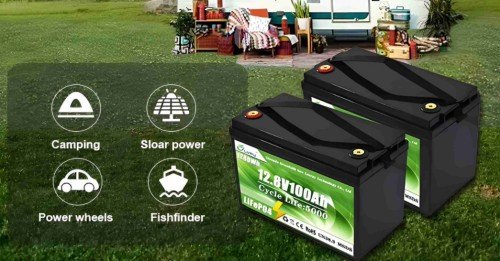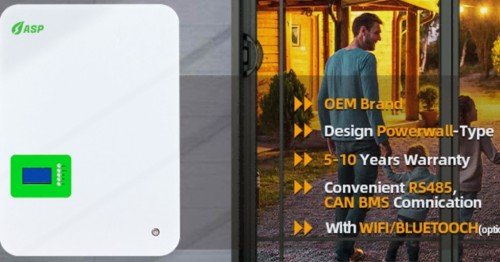An inverter battery plays a critical role in a solar system by storing excess energy generated by the solar panels for later use. It ensures that energy is available during cloudy days or at night when solar generation is low. Understanding how the inverter battery interacts with the solar system is key to optimizing energy storage and ensuring maximum efficiency.
Interaction Between Battery and Solar System
In a solar system with a battery, the battery works in tandem with the solar panels and inverter to optimize energy usage.

- Energy Storage1: Solar panels generate electricity during the day, converting sunlight into DC power. When the solar panels generate more energy than needed, the excess is stored in the inverter battery. For example, if your solar panels generate 10 kWh in a day, but you only use 6 kWh, the remaining 4 kWh will be stored in the battery.
- Energy Usage2: At night or during cloudy days, when solar generation is low, the inverter draws power from the battery to supply electricity to the home or business. A typical home solar system with a 5 kWh battery might last 4-6 hours if only essential appliances are used.
- Grid Interaction3: In grid-tied systems, excess energy that is not stored in the battery can be fed back into the grid. If the battery is fully charged and the solar panels continue to generate surplus energy, it may be sent to the grid for compensation or further use, depending on your net metering arrangement.
This interaction allows solar systems to maximize energy efficiency, reduce reliance on the grid, and provide backup power when needed.
Types of Inverter-Battery Systems
Different configurations of inverter-battery systems exist, depending on the specific energy needs and whether the system is grid-tied or off-grid.

-
Grid-Tied Systems with Battery Storage4: In this configuration, the solar panels are connected to the grid. The inverter converts DC power from the panels into AC power. Any surplus energy is stored in the battery for later use, or can be sent back to the grid. These systems allow for energy independence during the night or periods of low solar generation. For example, if you have a 5 kW solar panel array and a 5 kWh battery, you can ensure power during the evening or at night.
-
Off-Grid Systems5: An off-grid system operates independently of the grid. It consists of solar panels, batteries, and an inverter. All energy needs must be met through solar power and battery storage. These systems are ideal for remote areas or locations without reliable access to the power grid. A typical off-grid system might have a 10 kW solar panel array and a 20 kWh battery bank to power a small cabin or home.
-
Hybrid Systems6: Hybrid systems combine the flexibility of grid connection with the energy storage capability of batteries. The system can automatically switch between drawing power from the grid, the solar panels, or the battery, depending on the availability of energy and demand. Hybrid systems are the most versatile as they provide energy security and cost savings in both grid-connected and off-grid situations.
Battery Management System (BMS)
A Battery Management System (BMS)7 is essential for maintaining the health, safety, and performance of the battery in a solar system.

- Monitoring: The BMS monitors the state of charge (SOC), temperature, and voltage of the battery to ensure it operates within safe limits. For instance, it might alert you if the battery temperature exceeds 45°C, as this could lead to damage or reduced efficiency. A typical solar battery will last around 5-15 years, depending on BMS protection.
- Balancing Cells: The BMS ensures that all cells in the battery remain balanced, preventing discrepancies in charge levels between cells. This increases battery efficiency and lifespan. For example, if the system has 10 cells, the BMS ensures each one remains within 5% of the others, preventing damage.
- Protection: The system also provides protection from dangerous conditions like short-circuits or over-temperature scenarios, ensuring the safety of the entire solar system. If the BMS detects an overcharge or short circuit, it can disconnect the battery to prevent a fire hazard.
A properly functioning BMS ensures that the battery operates efficiently, lasts longer, and delivers consistent performance.
Energy Usage and Load Management
Managing energy usage and distributing power appropriately is essential for optimizing both battery and solar panel performance.

- Energy Prioritization: The inverter decides how to distribute energy between the solar panels, battery, and home appliances. In most systems, the solar panels supply energy to appliances directly, with any excess being used to charge the battery. For example, if your home consumes 6 kWh per day, your 5 kW solar system will directly supply most of that energy, with the remainder used to charge the battery.
- Battery Usage: When solar generation is not available, such as during the night or cloudy days, the inverter switches to battery power to keep essential appliances running. A 5 kWh battery might run lights, a fridge, and a few devices for about 4-5 hours.
- Load Management: Advanced solar inverters can prioritize the use of energy for certain appliances, ensuring that essential loads (e.g., refrigerators, lights) are always powered, while non-essential devices may be turned off if the battery charge is low.
This dynamic interaction ensures that power is used efficiently and the battery is not over-discharged, providing continuous energy without wasting resources.
Backup Power (Grid-Tied Systems with Battery Storage)
In grid-tied systems with battery storage, the inverter battery provides backup power during grid outages.

- Automatic Switching: In the event of a power failure, the inverter detects the grid outage and automatically switches to battery power. This ensures that critical appliances (like lighting, refrigerators, or medical devices) remain operational during the outage. For instance, a 5 kWh battery may provide power to your essential appliances for several hours during a blackout.
- Battery Duration: The length of backup power depends on the size of the battery and the energy consumption of the home or business. For example, if you have a 5 kWh battery and your essential appliances consume 1.5 kW per hour, the battery will provide backup for roughly 3-4 hours.
By providing backup power, the inverter battery offers added reliability and security, especially in regions with frequent power interruptions.
Conclusion
The interaction between an inverter battery and a solar system is essential for efficient energy management.
- The solar panels generate energy that can either be used immediately or stored in the battery.
- The inverter converts energy from the solar panels and battery into usable AC electricity.
- The battery stores excess energy generated by the solar panels and provides power when solar generation is low.
- The Battery Management System (BMS) ensures the battery operates safely and efficiently.
- Load management helps prioritize essential energy needs, while backup power provides security during grid outages.
Understanding these components and how they interact ensures that your solar system operates at peak performance, offering energy independence, cost savings, and reliability.
Footnote:
-
This link explains Energy Storage, focusing on how excess solar energy is stored in batteries for later use. ↩
-
This link describes Energy Usage, including how stored energy powers homes at night or during low sunlight. ↩
-
This link explores Grid Interaction, explaining how excess energy is sent to the grid in net metering setups. ↩
-
This link explains Grid-Tied Systems with Battery Storage, focusing on how they connect to the grid while storing energy. ↩
-
This link describes Off-Grid Systems, including their components and benefits for areas without grid access. ↩
-
This link explores Hybrid Systems, explaining how they combine grid-tied functionality with energy storage. ↩
-
This link explains what a BMS is, how it works, and why it's crucial for managing the performance and safety of batteries in solar systems. ↩




